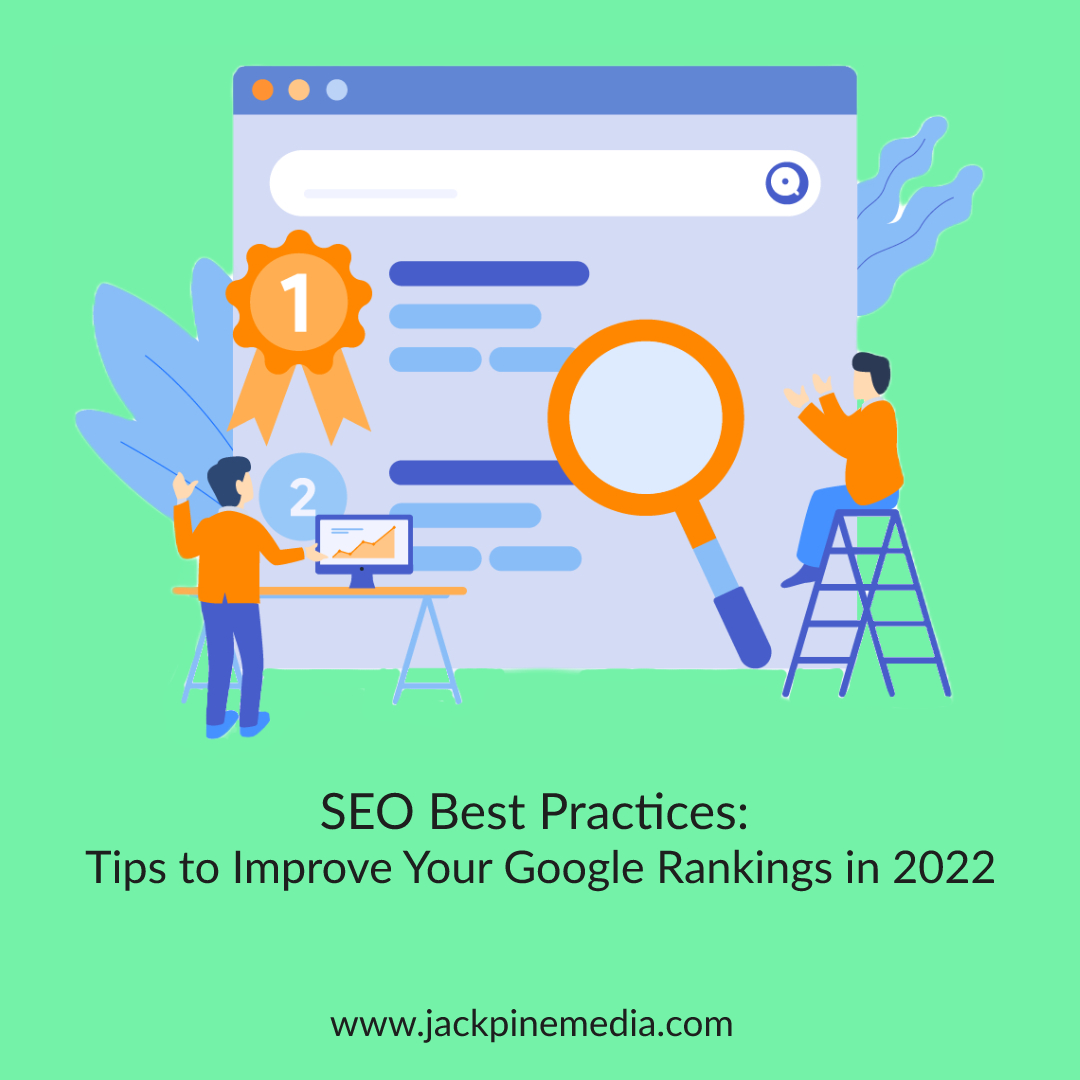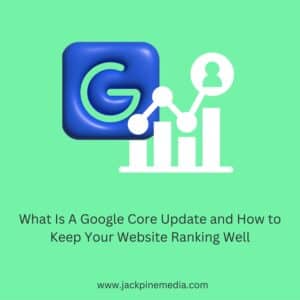Best practices for SEO are a set of guidelines designed to help improve your website’s search engine rankings. Here are the best practices you need to know in 2022
Keyword Placement & Search Intent
It’s no SEO secret that using keywords a couple of times on your page is essential. But did you know that the location of the keywords also makes a difference? Specifically, you would want to mention your main keyword at the top of your page. Why? Because Google puts more weight on words at the top of your page.
Once you’ve mastered the art of keywords. The next thing you need to master is thinking deeper about search intent.
Search intent (also known as “user intent”) is the user’s primary goal for every question on a search engine. Here’s a quick way to understand how search intent works. Take SEO for example. Searching for SEO Best Practices differs from finding an agency that can help you with SEO, which is also different from searching for the history of SEO. They all revolve around one topic (SEO) but the users all have different intentions or reasons behind their search. Searching for SEO Best Practices will most likely give you results from blog posts; while searching for agencies will give you e-commerce websites that sell the service, etc.
So you may wonder ‘Why is this important?’ It’s because Google cares about its user’s search intent. Figuring out if a user is looking for specific information (informational), searching for a specific website or app (navigational), searching for products (commercial), or searching to purchase (transactional), and satisfying this search intent through how you create content will certainly help you improve your overall rankings.
Image Optimization
Image SEO isn’t just for Google Images ranking. Properly optimized images can help your page rank higher, and here are the things you need to keep in mind:
1. Make sure you choose the best file format. Site speed is important in page ranking, and images are most often the thing that makes or breaks your website.
a. JPEG is the best for large, complex, and colorful images with high resolution and lots of gradients
b. PNG is more suitable for storing line drawings, text, and iconic graphics
c. WebP provides superior lossless and lossy compression for images while remaining the quality intact.
2. Make sure images are compressed. The larger the image, the longer it’ll take to load. This is why compressing your images before uploading them is very important.
3. Make sure your images have descriptive filenames. Use a filename that describes your images. Google can’t see images yet but will understand “man using laptop.png” over “image123.png”.
4. Make sure you provide image alt text. This improves accessibility for viewers who aren’t able to see images on web pages (users with screen readers or low-bandwidth connections). Just like your file name, you would want to write a descriptive alt text that lets search engines know what your image is about, so avoid alt texts like “image123” and use text like “image of man on laptop”.
Make Unique Titles, Descriptions & Content
Avoiding duplicate content is one of the most important SEO best practices to remember. And this applies to every piece of content, including meta tags, product information, image alt text, categories, URLs, etc.
Meta tags are snippets of text that describe your content and help search engines know what your page is about, and Title Tags and Meta Descriptions are the most important meta tags on your page.
Title tags indicate the title of your page. They are a major ranking factor because Google uses your title tag to get an idea of what is on your page and how relevant your content is to the user’s query. They help improve user experience as they act like headlines to entice users to click on your results since title tags appear as page titles on searches and social media ads and as tab names in browser tabs.
Tips on writing the best tags are simple:
1.Keep it short and unique.
2.Use your primary keyword.
3.Avoid duplicate title tags 4.Avoid using a large number of keywords (keyword stuffing)
Meta descriptions, on the other hand, describe the content of your page. This shows up below the title and URL on search engines.
Tips on writing the best meta descriptions are:
1.Writing unique meta descriptions for each page, utilizing your target keywords
2.Use action-oriented words that match the users’ search intent
3.Prove an accurate summary of your page
A Uniform Resource Locator (URL) is the location of your webpage. They usually appear between the title and meta description in search engine results. For this reason, Google recommends that a site’s URL structure should be as simple as possible, and be structured in a way that best organizes your content as this is a commonly overlooked aspect of SEO.
Tips to make your URL structure work:
1. Use a keyword that you want your page to rank for. When you include the keyword in the URL, Google thinks “this page is about this keyword”
2. Use hyphens as word separators on your URL. This lets google know that there are separate words on your URL instead of just one long unintelligible word. Example: “seo-best-practices” vs. “seobestpractices”.
3. Plan your structure based on search intent. Are you providing information? Are you selling a product or service? Structure your categories based on how people search for your services.
4, Keep it short and simple. Be descriptive and meaningful because long URLs confuse Google and other search engines.
Page Speed Optimization
Making sure your website loads as quickly as possible is a factor that also affects your page ranking, especially on mobile. If your website takes a while to load, you will have a lot of frustrated users.
Here are why you need to optimize your page speed:
1.Image compression. Images tend to take up the bulk of your page’s size, which is why it’s advisable to compress your images.
2.Enabling browser caching. Caching is the ability of a browser to store files on your computer, then loading those files from there the next time you visit a page. This reduces reloading asses, which reduces page load time.
3.Deleting unnecessary plugins. Keeping or hoarding unused plugins is vital to your website, not just for page speed optimization but also for security reasons. Getting rid of unused plugins helps immensely in improving website performance.
4.Reducing server response time. This is how long it takes for any browser to receive data from servers after it successfully sends a request to load a page. The higher the response time, the more likely users will opt to click out of your page.
5.Reducing redirects. Redirects are created when you need a page (URL A) to point to a different page (URL B). But what happens when you need to redirect URL A to another page? This then creates a chain that will get longer and longer and longer… The longer the chain, the more time it takes for your destination page to load.
6.Minify CSS and JS files. CSS and JS files are code that you send to the browser, and that the browser needs to render. A browser doesn’t care about how it looks, what language you use, the formatting, spaces, etc. Minifying these files, stripping them of spaces, line breaks, and comments help significantly decrease file size.
Use Internal Linking
Internal linking is adding a link from one page to another within your website. This is important because it establishes a hierarchy of information for your website and it helps Google understand your page content better.
Here are tips to get the most out of internal links:
1.Use keywords on your anchor texts. Google uses these anchor texts as a clue to find out what the page is about.
2.Link with search intent in mind. Instead of using words like “read more…” or “find out more…”, use actual text or words that utilize keywords to help your users, so when they want to find out more about whatever it is you are talking about, they can just click on the words themselves.
Improve User Experience
Improving your site’s user experience (UX) can, directly and indirectly, help with your SEO. Directly, because Google knows when people start looking at other pages on the Googe search results page after they’ve landed on your site. If people click out of your site from the search engine results, this tells Google that your site didn’t satisfy the user’s search which causes your ranking to slip. Indirectly, because people are more likely to share user-friendly websites. So if your site is hard to use, uses too many popups and ads, and contains a bunch of broken links, people are most likely not to share your website.
Here are SEO tips to ensure that your users have a great experience:
1.Use proper subheadings. Proper usage of subheadings (H1, H2, H3, etc) helps google understand the hierarchy of your content and makes your text more readable.
2.Make content visually appealing. Visuals help users understand content more. Use relevant media to help illustrate your points. Ensure that you use white space or negative space to make content more legible.
3.Be mobile-friendly. Everyone is on their mobile device. Ensure your content looks great on mobile as Google predominantly uses the mobile version of the content for indexing and ranking.
Unfortunately, there isn’t a single piece of advice that can ensure that your content ranks at the top of search results. These SEO best practices are an excellent place to start if you want to improve your search engine rankings. Once these best practices are implemented, make sure you keep up with emerging trends to stay competitive.
Reach out to us at Jack Pine Media to get started on your journey up the Search Engine Results page and stay up to date with the latest SEO trends.



